Some big land birds we photographed in East Africa
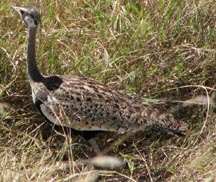
|
Black-bellied Bustard
— common in Masai Mara
— frequents old cultivations in search of particular local herbs
— long-legged Old World game birds of the family Otididae that frequent dry, open, grassy plains
— primarily insectivorous eating grasshoppers, beetles and caterpillars but will also eat seeds and small vertebrates found by the roadside
|
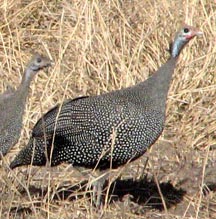
|
Helmeted Guineafowl
— gregarious
— breeds in Africa, mainly south of the Sahara
— widely introduced into the West Indies and southern France
— terrestrial, and are more prone to run rather than fly when alarmed
|
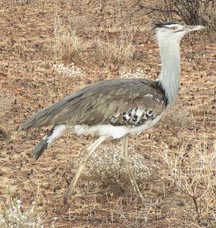
|
Kori Bustard
— avoids flying if possible
— may be the heaviest bird capable of flight
— often have bee-eaters on their back hawking insects
— male displays to attract several females and mates with them all - then leaves
(see below)
|
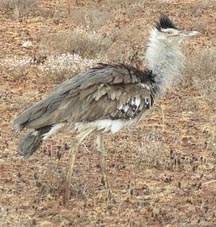
|
During pre-mating the male Kori Bustard will inflate its neck
|

|
Ostrich
— largest living species of bird
— run at speeds of about 65 km/h (40 mph)
— small vestigial wings are used by males in mating displays
— a flightless bird native to Africa, it is the only living species of its family
— acute eyesight and hearing, they can sense predators such as lions from far away
|
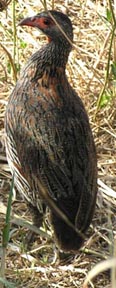
|
Red-necked Spurfowl
— a gamebird in the pheasant family
— reluctant to fly, it runs if disturbed
— roost at night and midday in bushes and trees
— males call early in the day and are territorial near nests
— breeds across the central belt of Africa and down the east coast to Tanzania
|
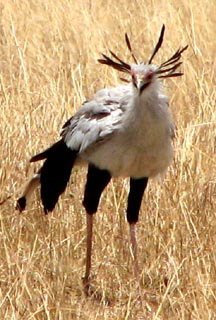
|
Secretary Bird
— a bird of prey with an eagle-like body on crane-like legs
— the only bird of prey that habitually hunts its prey on foot
— a prominent emblem on coats of arms of Sudan and South Africa
— named as appears to be carrying quill pens behind its ears, as secretaries once did
— birds roost on the local Acacia trees at night but spends much of day on the ground
|
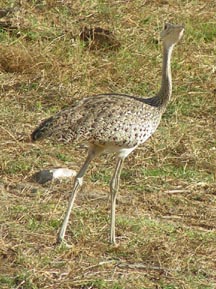
|
White-bellied Bustard
— prefers grassland with some shrub cover, usually in pairs or family groups.
— distinctive Old World family that diverged from cranes 70 million years ago
— bustard coloration protects them from aerial predators like hawks and falcons
|
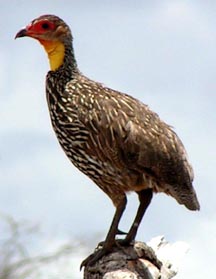
|
Yellow-necked Spurfowl
— have now been reclassified as Francolins
— the first European explorers used it as food
— because isolated, they have not been studied much
— generally found in pairs or small groups often by roads “scratching” in the dirt
|
|

|